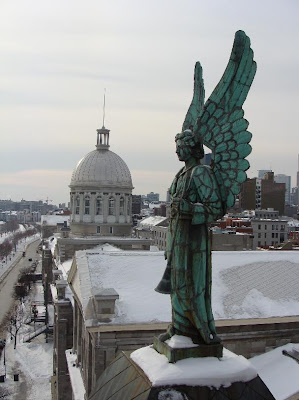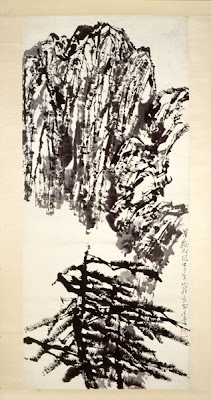Posting has been much lighter lately than I would like, largely because I've been occupied with the usual business that accompanies the start of a new semester together with sundry other projects (including clerical and logistical tasks connected with
the continuing process of preparing for regency). I'm very happy with my course schedule this semester, which includes seminars on early Christian asceticism and the theology of John Henry Newman as well as the final two courses in the sequence required for the philosophy degree that I expect to receive in May. In the midst of all of the above, I hope to find the time to continue posting often on this blog.
During
the recent vow renovation triduum at Inisfada, I finally started reading a book that I've been meaning to get to for a while:
The Journals of Father Alexander Schmemann, 1973-1983. I've admired
Father Schmemann ever since I read
For the Life of the World as a Jesuit novice, and after reading several of his heftier theological works I decided to take a look at the
Journals that Schmemann kept over the last decade of his life. Having started to read them at last, I can now say that Schmemann's
Journals are simply wonderful. As a record of Schmemann's private opinions on a broad range of topics, the
Journals cover everything from pastoral and theological questions to political and social issues as well as the ebb and flow of daily life. Making note of passages that I knew I would want to return to for further reflection, I quickly discovered that nearly every page I read offered something worth meditating upon. Though I'm only two-thirds of the way through my belated first reading of Schmemann's
Journals, I already know that I'll want to reread them fairly soon. In the meantime, I may share occasional reflections based on the book in posts on this blog.
One theme that emerges in a reading of Schmemann's
Journals is the importance of seeking God in one's daily life. In seeking a more conscious awareness of God's presence in our lives, we must also seek to rejoice in His company. In a journal entry dated February 26, 1975, Schmemann recognizes the difficulty as well as the importance of finding God in the ordinary:
Today we had an early Liturgy at the seminary. Walking to church, in the dark, but with a huge frosty moon, I thought with a great deal of repentance about my constant longing for freedom and some leisure from the fuss of my daily life. I felt quite sinful that I did not accept the reality of my life and was not faithful in little things. One has to accept each day and everything in it as a gift from God, and transform each day into joy. If all the details of my life (talks, students, meetings, correspondence) are not giving joy but are only a burden, then it is really my sin, my selfishness, my laziness.
Reading the paragraph quoted above, I was most struck by this sentence: "One has to accept each day and everything in it as a gift from God, and transform each day into joy." At first glance, this sentiment seems broadly consonant with a line from Schmemann's classic
For the Life of the World that I took note of in
a post from September: "A Christian is the one who, wherever he [or she] looks, finds Christ and rejoices in Him." On deeper reflection, it strikes me that the point Schmemann is making in his
Journals is a bit more challenging. Schmemann casts a fairly wide net in urging that Christians ought to find Christ "wherever" they look, and I wonder whether some might feel that they have done enough if they can find Christ somewhere - as, for example, they may find Christ in the church they worship in on Sundays. One may rest content to find God on Sunday while leaving aside the more difficult work of finding God during the week. As Schmemann notices in his
Journals, God comes to us not merely on Sundays but each and every day of our lives. As Christians, we are challenged to see every day - busy or idle, easy or hard - as God's gift to us. Receiving this gift, Schmemann urges, we are further challenged to rejoice in what we have been given and to share our joy with others.
The start of a new week is as good a time as any to consider whether and how often we "accept each day and everything in it as a gift from God, and transform each day into joy." This Monday, we may find that the week we've just started offers us something new and different. The inauguration tomorrow of Barack Obama as President of the United States certainly represents something dramatically new, and many will probably remember where they were when they watched or listened to Obama take the oath of office. This week also offers something new to students and teachers who have just begun or are about to begin a new academic term. For the many who are struggling with the effects of the global economic crisis, this week may represent a new period of uncertainty in the wake of job loss or serious financial setbacks. Considering the particular details of our own lives, we may find that this week offers us something new - or, on the contrary, we may find that this week offers us more of the same. My prayer for each of us in this new week is that we may take some time to reflect on the gifts that God offers us in our daily lives. I pray also that, with God's help and despite the challenges that we may face, we may find ways to "transform each day into joy." AMDG.














+Armenian+Jerusalem+01.JPG)
+Armenian+Jerusalem+02.JPG)
+Armenian+Jerusalem+03.JPG)
+Armenian+Jerusalem+04.JPG)
+Armenian+Jerusalem+05.JPG)
+Armenian+Jerusalem+06.JPG)
+Armenian+Jerusalem+07.JPG)
+Armenian+Jerusalem+08.JPG)
+Armenian+Jerusalem+09.JPG)











